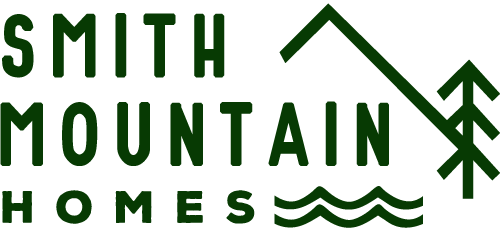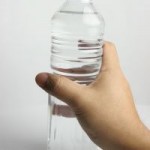 Many families at Smith Mountain Lake recycle plastic products to help prevent the deterioration of our environment caused by trash build-up. On the bottom of each plastic container you purchase, there is a triangular-shaped recycling symbol with a number in the center. That number denotes a certain type of plastic used in bottle manufacturing and it is relevant to our health as well as recycling issues.
Many families at Smith Mountain Lake recycle plastic products to help prevent the deterioration of our environment caused by trash build-up. On the bottom of each plastic container you purchase, there is a triangular-shaped recycling symbol with a number in the center. That number denotes a certain type of plastic used in bottle manufacturing and it is relevant to our health as well as recycling issues.
For instance, certain types of plastic leach out into your drinking water and are considered toxic, while others are even safe for use with hot liquids. In the article below Brian Clark Howard at The Daily Green demystifies these numbers and helps us understand how types of plastic affect our health and our environment.
Number 1 Plastics PET or PETE (polyethylene terephthalate)
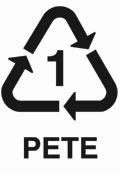 Found in: Soft drink, water, and beer bottles; mouthwash bottles; peanut butter containers; salad dressing and vegetable oil containers; oven-usable food trays.
Found in: Soft drink, water, and beer bottles; mouthwash bottles; peanut butter containers; salad dressing and vegetable oil containers; oven-usable food trays.
Recycling: Picked up through most curbside recycling programs.
Recycled into: Polar fleece, fiber, tote bags, furniture, carpet, paneling, straps, (occasionally) new containers.
PET plastic is the most common for single-use bottled beverages because it is inexpensive, lightweight, and easy to recycle. It poses a low risk of leaching breakdown products. Recycling rates remain relatively low (around 20%), though the material is in high demand by remanufacturers.
Number 2 Plastics HDPE (high-density polyethylene)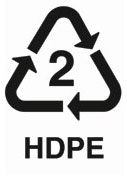 Found in: Milk jugs, juice bottles; bleach, detergent, and household cleaner bottles; shampoo bottles; some trash and shopping bags; motor oil bottles; butter and yogurt tubs; cereal box liners
Found in: Milk jugs, juice bottles; bleach, detergent, and household cleaner bottles; shampoo bottles; some trash and shopping bags; motor oil bottles; butter and yogurt tubs; cereal box liners
Recycling: Picked up through most curbside recycling programs, although some allow only those containers with necks.
Recycled into: Laundry detergent bottles, oil bottles, pens, recycling containers, floor tile, drainage pipe, lumber, benches, doghouses, picnic tables, fencing
HDPE is a versatile plastic with many uses, especially for packaging. It carries a HIGH risk of leaching over time and is readily recyclable into many goods.

Number 3 Plastics V (Vinyl) or PVC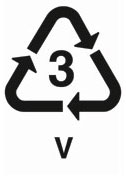 Found in: Window cleaner and detergent bottles, shampoo bottles, cooking oil bottles, clear food packaging, wire jacketing, medical equipment, siding, windows, piping
Found in: Window cleaner and detergent bottles, shampoo bottles, cooking oil bottles, clear food packaging, wire jacketing, medical equipment, siding, windows, piping
Recycling: Rarely recycled; accepted by some plastic lumber makers.
Recycled into: Decks, paneling, mudflaps, roadway gutters, flooring, cables, speed bumps, and mats.
PVC is tough and weathers well, so it is commonly used for piping, siding, and similar applications. PVC contains chlorine, so its manufacture can release highly dangerous dioxins, and it is not recyclable. If you must cook with PVC, don’t let the plastic touch the food. Also never burn PVC, because it releases toxins.
Number 4 Plastics LDPE (low-density polyethylene)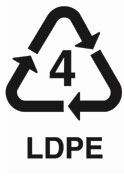 Found in: Squeezable bottles; bread, frozen food, dry cleaning and shopping bags; tote bags; clothing; furniture; carpet
Found in: Squeezable bottles; bread, frozen food, dry cleaning and shopping bags; tote bags; clothing; furniture; carpet
Recycling: LDPE is not often recycled through curbside programs, but some communities will accept it. Plastic shopping bags can be returned to many stores for recycling.
Recycled into: Trash can liners and cans, compost bins, shipping envelopes, paneling, lumber, landscaping ties, floor tile
LDPE is a flexible plastic with many applications. Historically it has not been accepted through most American curbside recycling programs, but more and more communities are starting to accept it. Generally considered reusable.
Number 5 Plastics PP (polypropylene)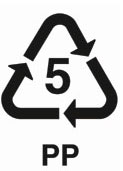 Found in: Some yogurt containers, syrup bottles, ketchup bottles, caps, straws, medicine bottles
Found in: Some yogurt containers, syrup bottles, ketchup bottles, caps, straws, medicine bottles
Recycling: Number 5 plastics can be recycled through some curbside programs.
Recycled into: Signal lights, battery cables, brooms, brushes, auto battery cases, ice scrapers, landscape borders, bicycle racks, rakes, bins, pallets, trays
Polypropylene has a high melting point, and so is often chosen for containers that must accept hot liquid. It is gradually becoming more accepted by recyclers.

Number 6 Plastics PS (polystyrene)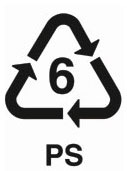 Found in: Disposable plates and cups, meat trays, egg cartons, carry-out containers, aspirin bottles, compact disc cases
Found in: Disposable plates and cups, meat trays, egg cartons, carry-out containers, aspirin bottles, compact disc cases
Recycling: Number 6 plastics can be recycled through some curbside programs.
Recycled into: Insulation, light switch plates, egg cartons, vents, rulers, foam packing, carry-out containers
Polystyrene can be made into rigid or foam products — in the latter case it is popularly known as the trademark Styrofoam. Evidence suggests polystyrene can leach potential toxins into foods. The material was long on environmentalists’ hit lists for dispersing widely across the landscape, and for being notoriously difficult to recycle. Most places still don’t accept it, though it is gradually gaining traction.
Number 7 Plastics Miscellaneous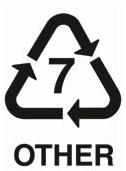 Found in: Three- and five-gallon water bottles, ‘bullet-proof’ materials, sunglasses, DVDs, iPod and computer cases, signs and displays, certain food containers, nylon
Found in: Three- and five-gallon water bottles, ‘bullet-proof’ materials, sunglasses, DVDs, iPod and computer cases, signs and displays, certain food containers, nylon
Recycling: Number 7 plastics have traditionally not been recycled, though some curbside programs now take them.
Recycled into: Plastic lumber, custom-made products
A wide variety of plastic resins that don’t fit into the previous categories are lumped into number 7. A few are even made from plants (polylactide) and are compostable. Polycarbonate is number 7 and is the hard plastic that has parents worried these days after studies have shown it can leach potential hormone disruptors.
By Brian Clark Howard at The Daily Green

